The Razer Edge Review
by Vivek Gowri on March 28, 2013 11:00 AM EST- Posted in
- Tablets
- Mobile
- Razer
- Razer Edge
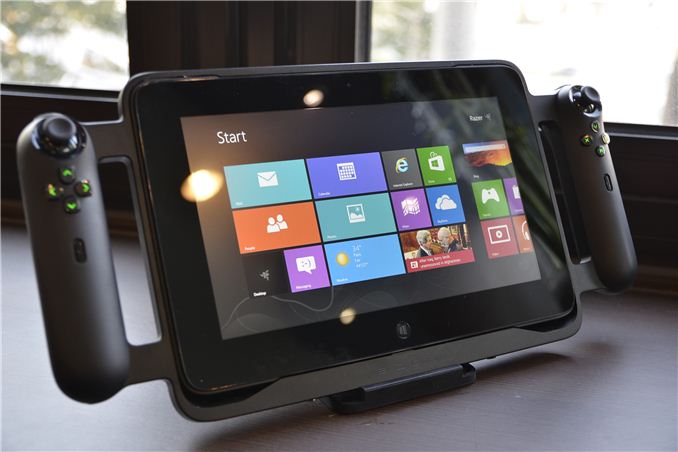
This story starts in a dark meeting room in the back of Razer’s booth at CES 2012. I’m sitting with CEO Min-Liang Tan, who is walking me through the intriguing Project Fiona concept gaming tablet. A number of major manufacturers announced Tegra 3 and OMAP4-based Android slates at CES 2012, but Project Fiona stood out – instead of an ARM SoC, it ran a Core i7 CPU, Nvidia graphics, and Windows 7. At the time my guess was an i7-2617M ultra-low voltage processor and an Nvidia GT 520M, though I never got a confirmation on either spec from Razer. In addition to the powerhouse specs, the tablet had handles resembling two Wii nunchucks attached to either side. Even with a small 10.1” display, the performance-oriented silicon and gamepad combined for a tablet that was big, hot, and heavy. Clearly, not an ideal solution, but the concept had obvious potential and was almost a lock to reach production eventually. It walked away from Las Vegas with a handful of awards.
Eventually turned out to be today, and so we have the Razer Edge. It’s the final production version of Project Fiona and comes with a few very key refinements, including updated silicon and a removable gamepad controller. There are really two angles to cover with the Edge. One is that it’s far and away the most powerful tablet on the market, the other is that there are a full complement of accessories that can transform it into a portable gaming machine, a console, a desktop, or (eventually) a notebook PC. With the range of add-ons available, the Edge turns out to be a pretty versatile system that can fit a number of usage models.
Razer tried an interesting tactic with Project Fiona – they turned to their Facebook and Twitter followers late last year to get feedback on what exactly the final product should look like. The choices offered were a thin, light, inexpensive ARM-based Android tablet, a Windows tablet with Ivy Bridge and integrated graphics, Ivy Bridge and a mid-range dGPU, as well as the when-pigs-fly option of a GTX-class graphics card. Based on the responses Razer got back from their crowdsourcing efforts, Min-Liang Tan posted the final spec on his Facebook: “Over 10,000 PC gamers voted to say that it should be feature an Intel Core CPU, mid-range discrete graphics card, up to double the thickness and weight of the new iPad, detachable controls and be priced at US$1200-$1400.”
Considering that the initial design concept shown at CES basically hit those marks (save for the detachable controls) I’d say that the result was unsurprising, but it was a good show from Razer to actively engage the community and listen to their feedback. The Edge was submitted to the FCC almost two weeks before Razer even started asking for feedback on their forthcoming tablet, and was given approval a week before the crowdsourced spec was announced, so it’s unclear how much the responses played into the final product beyond the marketing angle that Razer has been playing up.
From a hardware standpoint, the Edge is a monster. Anytime you start talking Ivy Bridge and dedicated graphics in a 10.1” tablet, the result is going to be slightly unhinged. Razer went with the proven Ivy Bridge ULV/Kepler combination, and for good reason, because it has been an absolute godsend for mobile products. All variants of the Edge come with Nvidia’s GT 640M LE graphics card, which serves as the major silicon-level differentiator between the Edge and other IVB-based tablets like Microsoft’s Surface Pro and Samsung’s ATIV Smart PC Pro 700T. The GT 640M LE is the lowest end of the Kepler totem pole, with Optimus, 384 cores, 16 ROPs, 32 TMUs, and core clocks of 500MHz with GPU boost pushing that to 570MHz. In this guise, there’s 2GB of DDR3 VRAM clocked at the reference 900MHz with a 128-bit memory interface. Interestingly enough, this is the same graphics core as the 2nd-gen Blade, except with lower clock speeds and far slower memory.
The power draw question is an important one – the ultra-low voltage IVB parts have a 17W TDP, while the GT 640M LE has a TDP in the 20W range (between the various speed and memory configurations, it’s hard to be exact). Toss in additional loads from the display, SSD, RAM, WiFi, and then we’re talking real numbers. It’s hard to find workloads that peg both CPU and GPU, so expecting a 40W draw during typical gaming situations wouldn’t be unreasonable. That’s a *lot* for a handheld device. And so, naturally, the Edge is quite a bit thicker than other tablets at 19.5mm (0.8”) – compare that to Surface Pro at 13.5mm, or to jump into the ARM tablet realm, the iPad at 9.4mm and the Nexus 10 at 8.9mm. Hell, the Edge is thicker than my Zenbook Prime when closed (18mm at its thickest point).
It simply needs to be that thick to dissipate heat effectively – 40W thermal loads are no joke. But it’s not just thick in the z-direction, the footprint is also pretty large considering that the screen is only 10.1” diagonally. The x and y-dimensions are actually a bit larger than the Surface Pro (which has a 10.6” display) and far beyond normal 10.1” tablets, though they are still well short of the 11.6” tablets out there. The Edge is unsurprisingly heavy by tablet standards, but matches Surface Pro at 2 pounds even with a larger chassis and significantly more computing horsepower on board.
Other specs include Intel’s Centrino-N 2230 wireless card (2.4GHz only, no dual-band 5GHz fanciness here even though it really should be mandatory for anything costing more than $500), a 10.1” 1366x768 IPS display sourced from LG, a Synaptics capacitive touchscreen, and a 41.44Wh Li-poly battery. A note about the display – while most of the other Ivy Bridge-based slates and convertible tablets playing in this price range feature 1080p panels, I’m actually alright with the Edge having a low-res panel because GT 640M LE will absolutely choke at anything higher than 768p. Given the additional constraints on power consumption and thermal dissipation, it was likely just easier (and cheaper) to ship a 1366x768 panel.
As far as on-tablet port selection goes, there’s a USB 3.0 port, a combo 3.5mm jack, and the dock/power connector. That’s it. When you consider that Surface Pro has a mini DisplayPort video connector as well as an SD card slot in addition to USB 3.0 port in a slimmer chassis, it’s truly disappointing to see that there are basically no ports beyond the lone USB. I understand that when mobile, it’s rare to need more than one USB port, but the lack of on-device video out is a pretty crucial oversight. At present, the only way to get video out from the Edge is to buy the HDMI docking station. There simply needs to be an easier way to do it without resorting to bringing the dock everywhere you go, even if it means an adapter from mini to full size HDMI. I’d actually even be okay with a dock connector to video out adapter, the way Apple does it.
In an interesting side note, Razer is also announcing a partnership today with Valve to preinstall Steam on the shipping Edge units. It’ll likely be one of the first pieces of software installed on the Edge (it certainly was for me), so it’s a move that makes sense for both companies, especially since Razer is marketing the Edge as a portable open console.
The Edge comes in two flavors, base and Pro. The entry-level SKU has an i5-3317U (1.7GHz), 4GB of DDR3, and a 64GB SSD for $999, while the Edge Pro bumps that up to an i7-3517U (1.9GHz), 8GB, and a 128GB SSD for $1299. Upgrading to a 256GB drive costs a further $150. The evaluation unit we received was the full-tilt Edge Pro 256GB, which has an SF-2200-based ADATA XM14 mSATA SSD. The pricing makes sense, with the base Edge coming in at a $100 premium over an equivalent 64GB Surface Pro. You lose the 1080p display and Wacom digitizer, but the graphics card makes for a pretty potent trump card.
With that said, I’d certainly hesitate to get the base model with just 64GB of storage; after taking out the chunks for recovery partitions and Windows, you might have half that space remaining. Considering the size of games these days, it’s not really a workable solution. I’ve installed maybe 10 games on my Edge review unit (the seven in our 2012 benchmark suite, plus a couple more) and there’s only 90GB of free disk space left. The 128GB Pro seems to be the sweet spot in the Edge lineup, particularly when bundled with the gamepad controller for $1499.
That brings us to the other side of the story: the range of accessories Razer is releasing alongside the Edge. The most prominent among them, of course, is the gamepad controller, as well as a docking station that provides an HDMI and three USB ports. Both are available now alongside the tablet, while the third piece of the accessory puzzle, a mobile keyboard dock, will not show up until Q3. In typical Razer fashion, the accessory costs are borderline highway robbery - the gamepad controller retails at $249, the HDMI dock goes for $99 and the laptop dock will end up at least $150 when it does release eventually. That doesn’t even factor in the $69 for the secondary 41.44Wh battery that slots into the gamepad and laptop dock. It all adds up, and eventually the reasonable cost of the tablet hardware starts to look not so reasonable anymore. But we’ll get there.


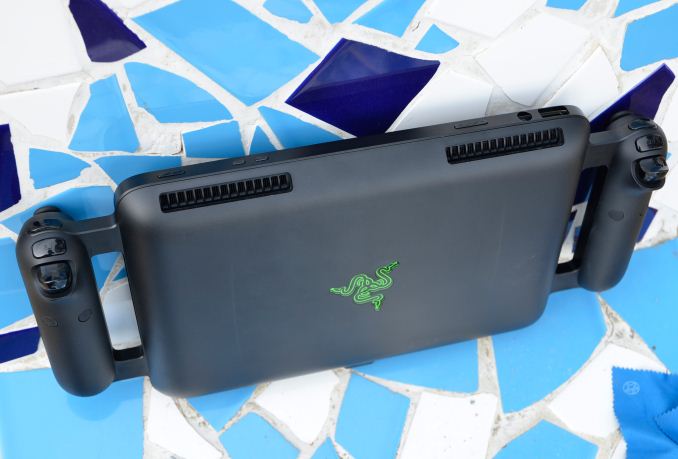

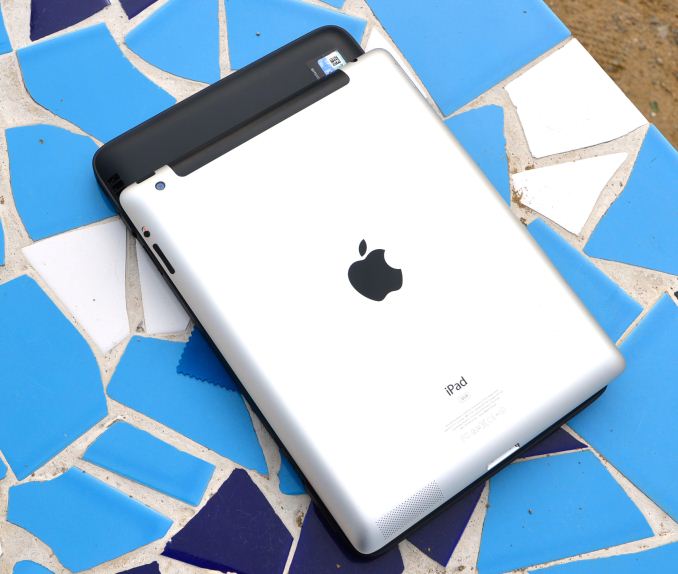
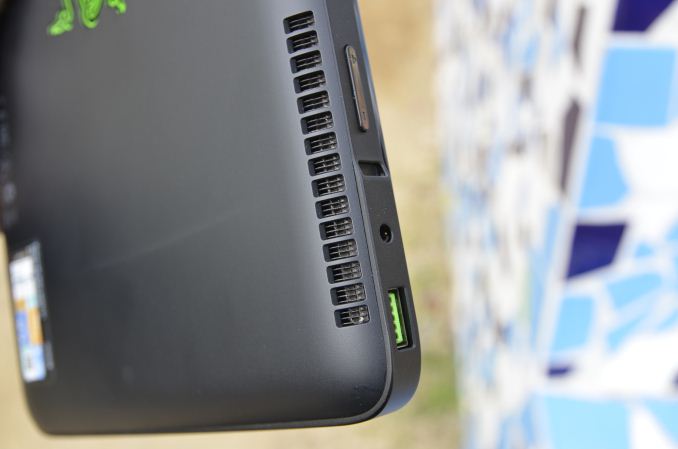
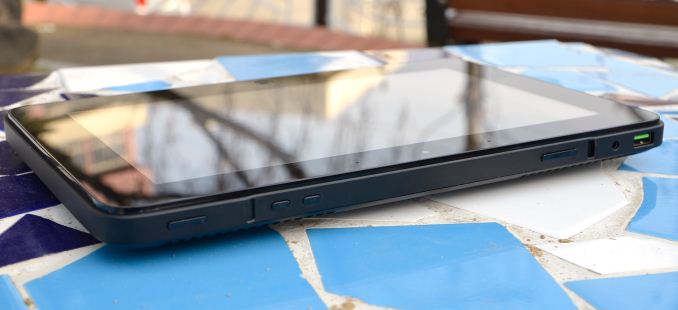
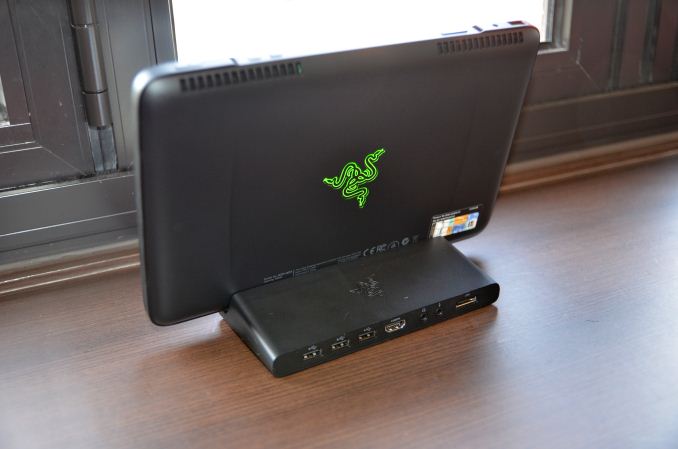














89 Comments
View All Comments
randomlinh - Thursday, March 28, 2013 - link
This is how I envision a Steam box. Pick up and play anywhere... and if I have the time, dock it to a TV for big screen fun.Now I just need the price to cut in half....
SR81 - Thursday, March 28, 2013 - link
... except Valve has the intention of it being a $99 set top box that streams your games from your PC, just like the NVIDIA Shield without a screen.Mumrik - Thursday, March 28, 2013 - link
I have to assume this thing is for people looking to replace their normal stationary/laptop.Havor - Friday, March 29, 2013 - link
Yeah still, but for a starting price of $999, this is actually NOT pretty good value.Come on $1000 for a heavy tablet, with only a 64GB SSD ware a big chunk will be used by the Win8 OS, and then $250 for the gaming grip.
Even the Razor Edge Pro with a 128GB SSD and a i7 instead of a i5 would be at $1000 to high to be useful!
Not saying that the price is to high for what it cost to make the tablet, I say the price is way to high for the real world value of the tablet, think whit a efficient Haswell CPU they could make something lighter and more useful.
But unless they get the price down to around $500~600 with a included game controller grip, i dont see lots of people buying this overpriced tablet.
And I wonder if the reviewer was smoking pot, or is this is a Infomercial, instead of a real review, because even do its a wonder of engineering, i don't see the appeal, and a product like this would only find buyers if it had the Apple logo on it!
perry1mm - Saturday, March 30, 2013 - link
I don't understand how you can say this is not good value. $1000 is not much if you're in the market for a laptop/tablet and are on the go enough to make it worth it...plugging in and playing games in a small profile for easy packing, carrying, and just general versatility, this is a dream come true.There are other options out there that I personally think are more feature rich and fit my personal use better in the same price-range and versatility, but even so the Edge fits the same type of device I'd want...and for comparable laptop performance you'd pay the same.
I wouldn't need anything but the keyboard dock if I did get one of these, though I personally have the Vaio Duo 11 that play games great and is much better out-of-the box feature-wise, port-wise, and display-wise. Plus I got the highest spec'd one with 256GB SSD for $1300 after a promo and $100 credit back with the Sony Card.
The main issue would be regular on-the-go battery life but if you can stretch it on power mode to get 4-6hrs, I think that is suitable, since anyone who is getting this should already expect to plug in for heavy game usage unless they're on a flight and want a couple hours of it.
If they packaged the keyboard dock when it is available with the Pro i7, 256GB, 8GB RAM model, for $1500, it would probably be one of the best value gaming laptops for portability on the market.
The Surface Pro with it's i5 and 4GB RAM is sorely lacking in performance. The only real downside for me is the resolution, as my Vaio Duo has spoiled me in that department and all the games I've played (DmC, HL2, Dota 2, WoW, Borderlands 2, Bastion, SC2, Portal 2, L4D2, FC2, and numerous others) all ran smoothly at 1080p if I turned down most settings and looked great at solid 30+FPS if not better.
Havor - Saturday, March 30, 2013 - link
" $1000 is not much"I am very well off, I am a supervisor in the offshore, and my wife is a deputy director of a local part of the national institute.
Still i think $1000 is way to mouths for what you get in return, like i said, not saying that the price is to high for what it cost to make a device like this, saying if you wait 1~2 generations, you get way more for a lot less.
This tablet falls in the category as the first LCD TVs, they ware around $5000 for a 40", and just like this tablet, the asking price was not to high for what it cost to make one, I am saying, you have to be a idiot to pay $1000~$1500 for something that will be outdated in 2 years by way better devices.
"for $1500, it would probably be one of the best value gaming laptops for portability on the market."
Got a ASUS G75VX for work, and a Transformer for on the road, ware i depending on use use the dock with, nut yeah i cant play FPS games on the Transformer, still there are lots of other fun games other the Angry Birds that i can also play on it.
The G75 is a real desktop replacement, i can use when i am @work, I am "on the go enough" about +50% of the year, but i cant really see any real benefits over a normal tablet.
"The Surface Pro with it's i5 and 4GB RAM is sorely lacking in performance."
I never said the Surface Pro was a good deal, I say your a idiot or have to mouth money if you if you buy this, as you can be a early adopter of tech that is not ready for prime time, if you buy it anyway i and many others will think something of you, if you tell the total price of what you got in your hands.
"you must be the one smoking pot if you think this would be $500-600 with a controller grip"
Read correctly, i did not say the device was was overprices for the tech you get, i say the its just not worth it, as in 2 years from now you get the same for half the price and weight, whit 50% more powerk
rviswas11 - Tuesday, April 2, 2013 - link
i don't think you realise that the only in this thing that is going to get outdated in the next 2-3 years is the battery. as far as the performance goes even you anus will be outdated in the same time framerviswas11 - Tuesday, April 2, 2013 - link
sorry i ;meant asus.truthbeacon - Saturday, April 6, 2013 - link
Again, it still depends on your perspective - As a consultant in a field where I am working the same places as you (and at the slope among other places which are out of touch with the world) and I never go anywhere without my $1400 (two years ago) SB slate.What you are glossing over with regards to value is that even when flying at the front, it is infinitely easier to get more work done with a tablet or slate pc because they take up so much less space (even this chunk). If you throw in the ability to do a good job of playing games for those exceedingly rare occasions when you don't have reporting or bureaucratic nonsense to deal with, you don't want to have to pull out a 15" {even ultrabook although they suck for gaming compared to ones with discreet cards} to do anything.
Where the slate PCs come in at far handier than a tablet is that when I am leaving a site with a 6 hour flight to my next destination, I can pull out my slate and begin working on reports and generate graphs using the same proprietary software that I just collected data on. I am not limited to almost-office software, at the mercy of what is (or more appropriately what is not) available for my ARM-based device and can even bring along a full ergonomic keyboard if I wish. Further, when I am flying out, I can prepare my data collection software so that when I arrive I am not scrambling to meet the always over-optimistic "we're going to start up this afternoon" hopes, because you know how bad critical path is during a startup.
perry1mm - Saturday, March 30, 2013 - link
Oh, and to add with your last couple of comments...you must be the one smoking pot if you think this would be $500-600 with a controller grip. Are you f***ing serious, lol. That barely gets you an iPad, Surface RT, Nexus 10, or a laptop with s*** specs. To say it should be that price WITH the controller grip is absolutely asinine.And YOU don't see the appeal, but for someone like myself that travels regularly, is on-the-go for work almost everyday where I spend an hour or two sitting down in various locations, travel regularly for family, vaca, or just to get away with my wife for the weekend, it is perfect. The tablet versatility, performance when needed and I can plug in, plus the small profile for easy carrying/storing/space-use constraints, it really is awesome.